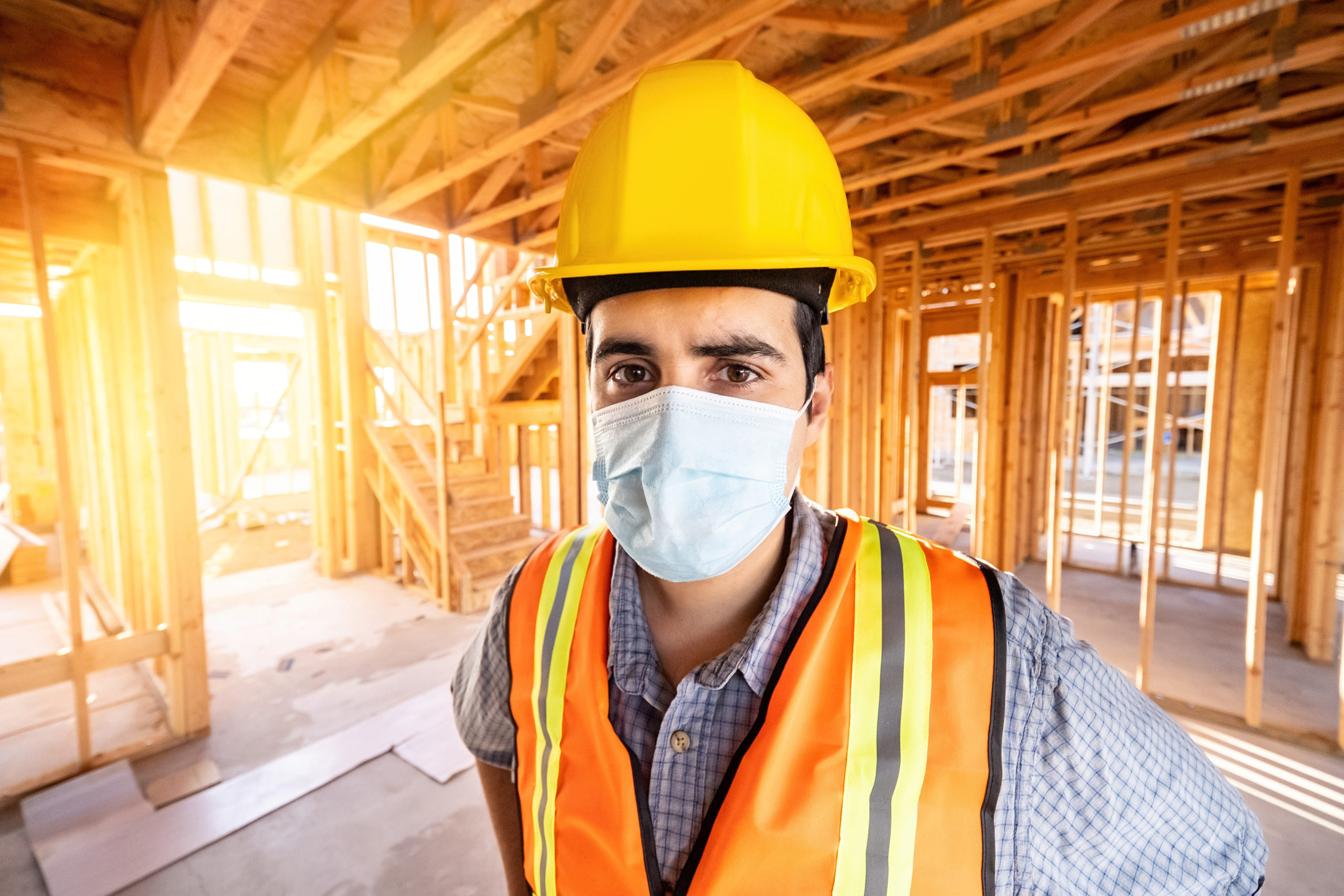Best Practices for Ongoing COVID Safety on the Jobsite
February 23rd, 2021
Our lives have been forever changed by the COVID-19 pandemic, directly or indirectly, and home building and remodeling jobsites are no exception. As the pandemic unfolded last year, tackling safety on the jobsite quickly became paramount to continuing to work, and many building professionals had to implement at least some COVID safety best practices, depending on local requirements, from social distancing to PPE to limiting the number of workers on site at a time.
Here’s an overview of the latest recommendations—and some insights from the field.
The Official Word on COVID Safety
The Centers for Disease Control’s page dedicated to construction workers and safety best practices during COVID-19 is continually updated as new information comes in, as methods of protection change, and as we continue to learn more about how the virus works. OSHA also continues to maintain a detailed page chock full of COVID worker safety information to help you conduct a job hazard analysis and make decisions on best practices for workers.
These conversations and decisions must be made daily for everyone’s safety, particularly because, as Professional Builder reports, construction workers are one of the highest groups of people who get COVID—even higher than healthcare workers. In addition, a large percentage of construction workers intend to refuse the vaccine.
Along with keeping workers safe on the job, taking precautions also sends a visual message to clients that we’re doing everything we can to operate safely in every capacity.
As the vaccine rolls out slowly across the country, it may become a requirement by your employer that you get the COVID vaccine to continue going to your workplace—that includes people in the building industry. Regardless, until more people have been vaccinated and we eventually reach “herd immunity,” COVID safety measures must continue to be taken wherever and whenever possible, particularly if you have workers who do not wish to get vaccinated.
COVID Jobsite Best Practices
A year into these changes, most builders and remodelers have adopted best practices and procedures to keep team members safe and ensure their companies are in compliance with local requirements.
Joe Danz of Boston Exterior Remodeling is not only a home remodeling professional, he’s a former nurse, so he’s taken COVID seriously from the start. Danz says he takes a customized approach to each jobsite and situation. Early on, he found problems in requiring complete PPE when it wasn’t necessarily needed—his workers generally stay a safe distance apart while working together anyway. In some cases, the suggested protection could do more harm than good. “If [workers] have a mask on and wear glasses or need to put on safety goggles, the lenses can fog up, which can be dangerous,” said Danz. “So instead we keep workers separate, a safe distance apart. Fortunately, on exterior projects like ours, that’s usually easy to do.”
Whenever workers are physically close together, he does make sure they are masked. “There’s a margin of tolerance we have with making people safe. The optics can be important to our clients. It’s a balancing act.” To that end, Danz puts on his mask and shield before meeting with clients and texts them to let them know he has arrived so they can meet him outside where there is fresh air. He maintains a safe distance from clients even with the PPE on so they feel reassured.

Danz has implemented other safety procedures to serve as a daily reminder that compliance is necessary—but uses common sense as to whether or not every single measure is warranted. For example, in the early months, he instituted a sign-in sheet procedure where each worker has to state at the start of each day that they feel physically well and that they have a normal temperature before they can start working. This requirement has lessened as his team knows the drill—and knows not to show up for work if they feel sick or have a temperature. Knowing your clients and thinking about how many workers are on the job and where they will be placed while working is a key part of using your best judgment. “We definitely make sure to use the sign-in sheet on big jobs where there will be a lot of people, including inspectors,” Danz says.
Boston Exterior also added a foot-operated hand-washing station when possible, or at minimum a hand sanitizing station with sanitizer, paper towels, and buckets to ensure hands stay clean.
No matter what, all building professionals should refer to the requirements of their local jurisdictions and follow procedures as required, as they vary greatly from area to area.
One growing issue is “COVID fatigue,” something building companies must tackle if they want to continue to keep their teams safe. The NAHB expressed concerns about this phenomenon in January, Builder magazine reported, and pushed for a second safety stand-down (the first was held last April) to keep best practices top of mind. If your company wasn’t able to participate, NAHB offers guidance and steps here. The association provides additional resources on its website, including a downloadable jobsite safety poster.
COVID-related best practices for worker safety are here to stay—at least for the time being. Many of these changes are easy to implement and smart, regardless of COVID. Studies have found that other illnesses like the flu sharply declined this season, and regular hand washing, social distancing whenever possible, and wearing masks have helped spur that trend.
Depending on the willingness of your workers to get vaccinated and the changing nature of the virus, safety measures like this may need to be in place permanently to help keep workers from making each other sick with any type of illness. For your safety, the safety of your clients, and the safety of your workers, staying consistent with COVID-smart practices on the jobsite is good for everyone.
Hero image: iStock.com/Juanmonino
